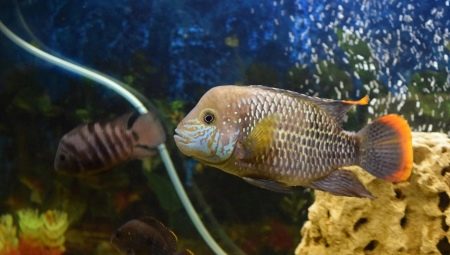Any novice aquarist wonders who to put in his artificial pond. Maybe it will be little guppies with their veil-shaped bright tails? Or unusual big-eyed telescopes? Or maybe you should turn your eyes towards predators? After all, they are no less, and sometimes even more interesting, than the peace-loving "vegetarians". This is precisely about aquarium predatory fish that will be discussed today in our article.
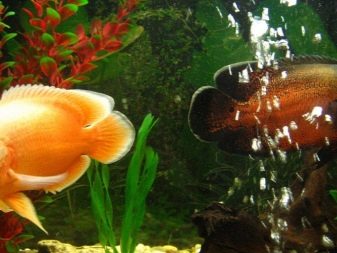
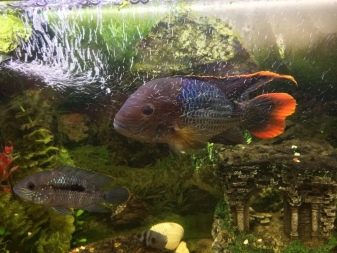
Features
The content of predatory fish is not at all as simple as it might seem at first glance - It has a number of characteristic features.
- First of all, you must understand that not every fish will gladly throw itself on a piece of meat - for some of them hunting, that is, live game, is of fundamental importance. Can you provide such a fish with a complete diet?
- Further, due to the specifics of the feed, the water in the aquarium where the “live-throats” live is very quickly contaminated, which means that you will have to change it and clean the tank more often.
- Predators, as a rule, are large fish, respectively, and they need a considerable area of residence. You will have to allocate enough space in the lighted corner of the room to place an aquarium there, equip it with cleaning and air systems, as well as other special equipment, and this can cost you a tidy sum.
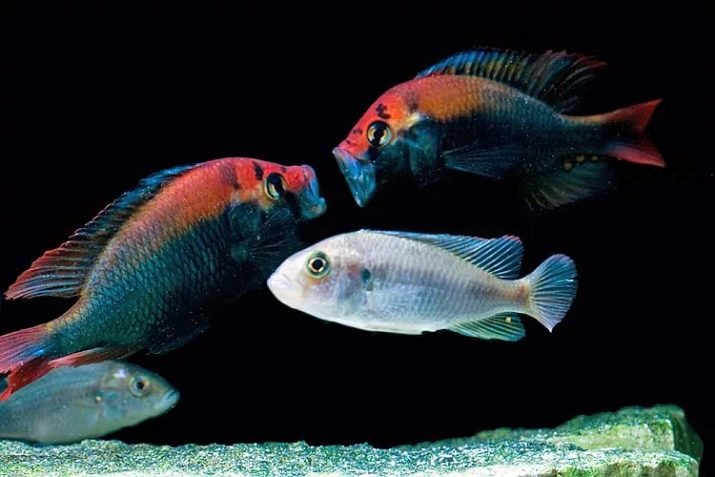
Varieties
Let's take a closer look at the description of varieties of aquarium predators. Perhaps, at the end of such a "meeting" you decide to purchase one or more of them.
Anabas or Slider
It got its second name because in the wild it often jumps out of the water and sits on trees (by the way, no one knows why they do this). That is why it is worth covering an aquarium with pineapples so that they do not creep around the apartment. As for the diet, the slider will enjoy a small fish, fry or boiled rice grains with pleasure.
Pineapples prefer to live in a flock of 4-5 representatives. The volume of the aquarium is preferable from 150-200 liters.
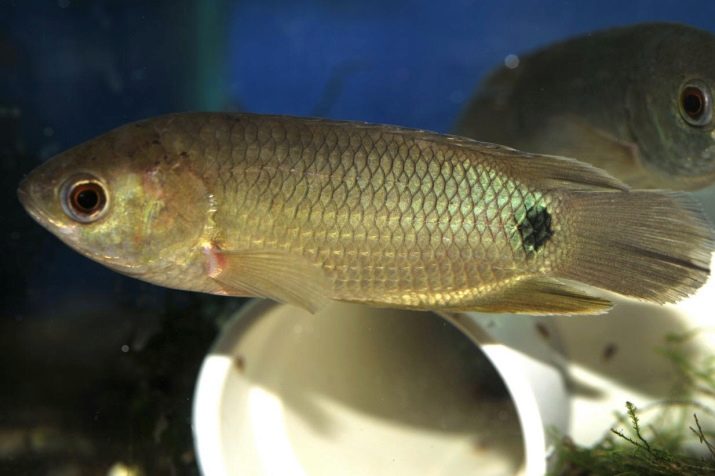
Protein afteronotus
Large (about 30–35 cm) and rather angry fish, which does not tolerate competition. Apteronotus jealously guards its territory, so if you decide to settle it at home, then keep in mind that you will have to buy an aquarium at the rate of 200 liters per fish.
Afteronotus is a born hunter, he will gladly pursue and eat any living bait, whether it is a fish, freshwater shrimp or crustacean.
Squid meat cut into small pieces is also suitable as feed.
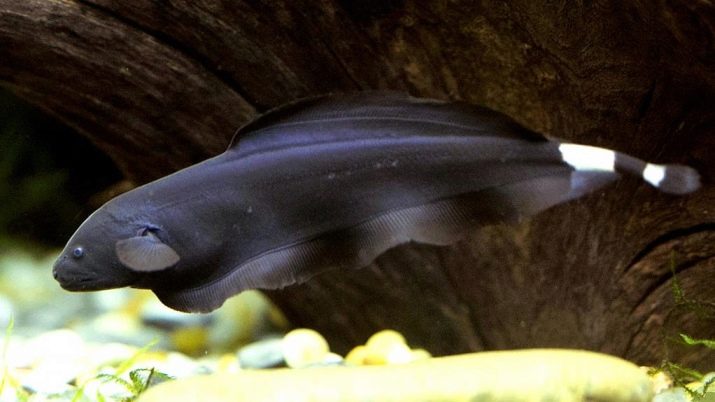
Belonesox
It is interesting in that it belongs to live-bearing species.
This fish is so aggressive that it can kill a partner during courtship (this behavior is inherent in females). At the same time, he is indifferent to larger fish and does not try to eat them.
White whales eat small fish, fry, and sometimes tadpoles.
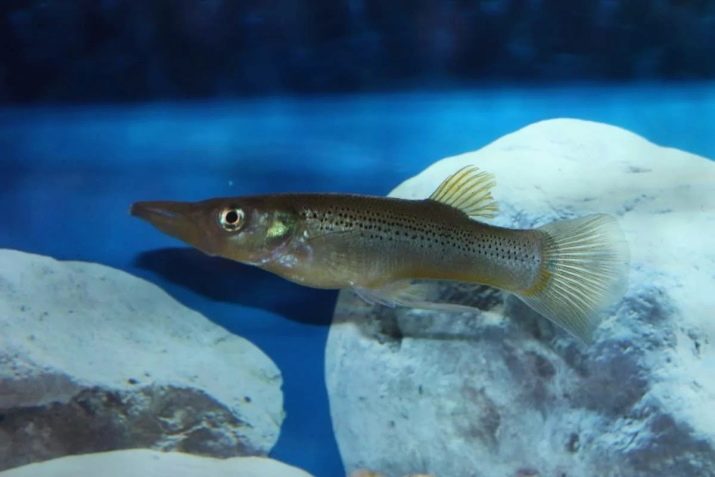
Diamond bass
Predatory fish, which does not differ in heroic size (grows on average up to 5-6 cm), as a result of which it will not be able to harm the larger "neighbors", but this fish is a carnivore. To feed it, you have to cook beef or pamper perch with a small freshwater fish.
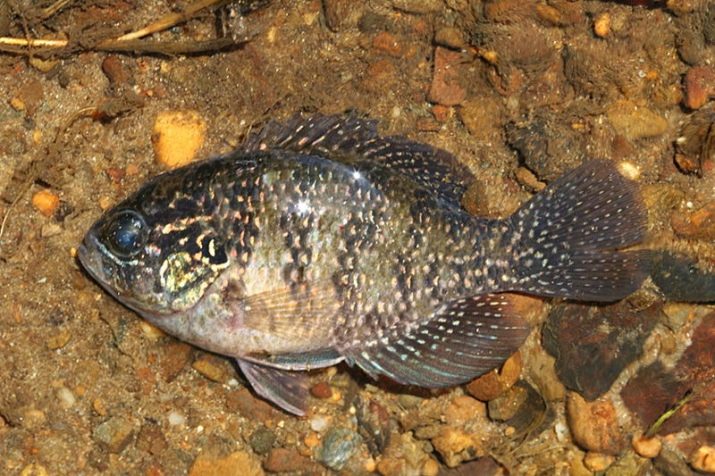
Kalamoikht Kalabar, or snake fish
At first glance it may seem a timid and shy pet, because during the day the “snake” hides, and goes fishing at night. However, it is precisely this way of life that helps the kalamohacht survive - sometimes fish become its prey, much larger than it in size.
In the wild, it is able to "extort" a meter in length, but the aquarium content reduces its growth to 35–40 cm.
Kalamoikhtov is best kept without outsiders because of their aggressiveness. It is important to equip grottoes, caves and stone slides at the bottom so that they can hide there during the day.
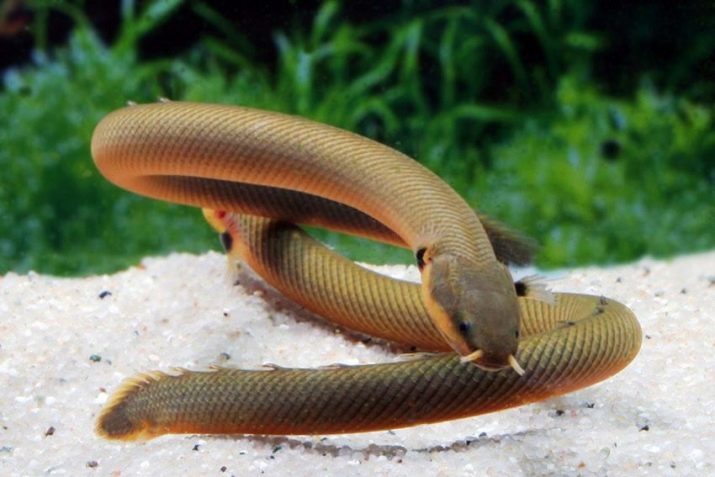
Red piranha
The world famous predatory fish. There are many stories about how a cow was brought into a river teeming with piranhas, and they gnawed it to the bones in a matter of minutes. For the creepy look with the lower jaw extended forward and sharp triangular teeth, many aquarists are very fond of them.
Piranhas are schooling fish, therefore it is recommended that they be kept only by the “collective”. The capacity for them needs quite a lot.
Main food - finely chopped fresh-frozen poultry meat, It is also recommended from time to time to indulge piranhas with live fish. Keep in mind that with a lack of food, these predators are able to devour individuals of their species.
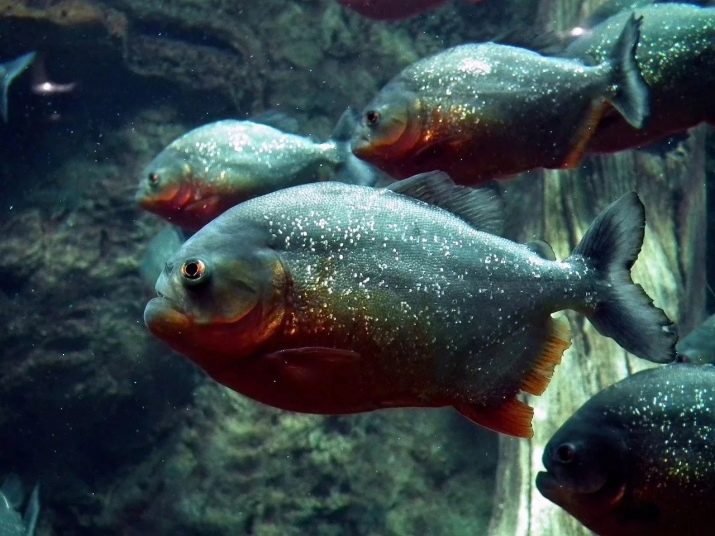
Cardiac cranicity
A predatory creature native to Brazil. Likes to feast on small fish, tadpoles, lean beef, worms. Quite vicious, requiring enough free space for movement (for two fish you need a tank with a volume of at least 400 l).
Very fast, loves to hunt and frolic, because of which it can get injured by crashing into a decorative ornament, therefore it is advisable to leave the aquarium space free.
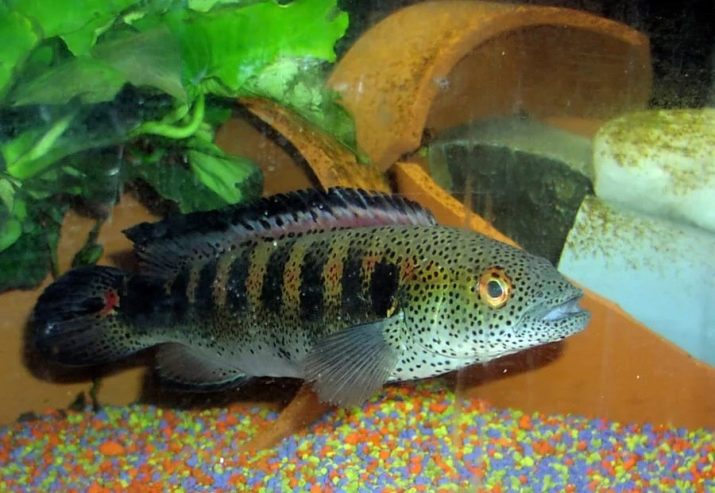
Common Swordsman (Hudget's pike)
Another water aggressor. Recommended group content (5–8 pcs.), Because Mecheroti prefer to go in pairs or the whole pack to hunt. Externally, the fish resembles a mongrel.
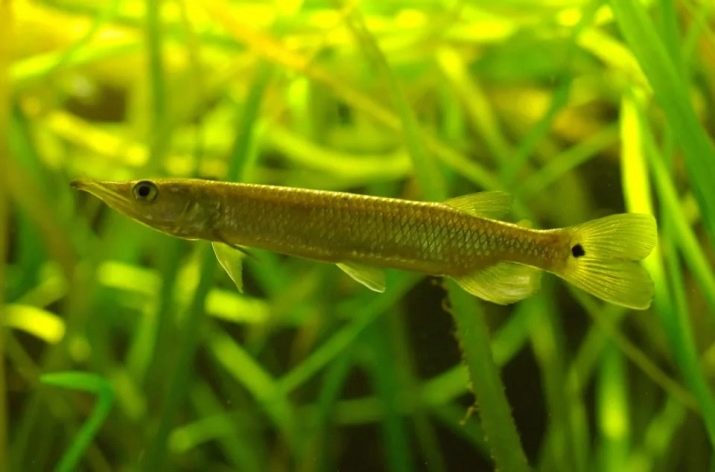
Spotted indian knife
A large and vicious fish, even at war with its relatives. Very territorial. It leads a nocturnal lifestyle, therefore, it is recommended to feed in dim light. Prefers to eat tadpoles, fry, small fish.In captivity, an Indian knife has a length of up to 30 centimeters, he needs a large spacious aquarium (150-200 liters per individual).
It is advisable to decorate the bottom with driftwood and clay pots, where the predator will hide.
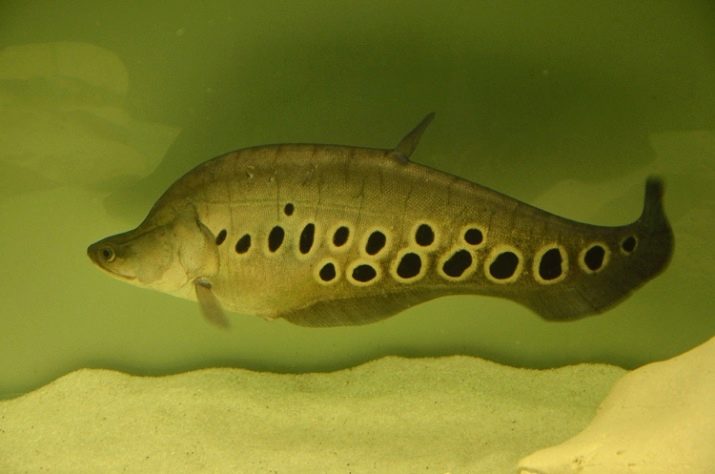
Sunny perch
A very attractive representative among fish predators. It needs a spacious dwelling - the capacity should exceed 200–220 liters per individual. For well-being, the perch must be properly and nourishingly fed: earthworms, various larvae, squid meat and fish fillets.
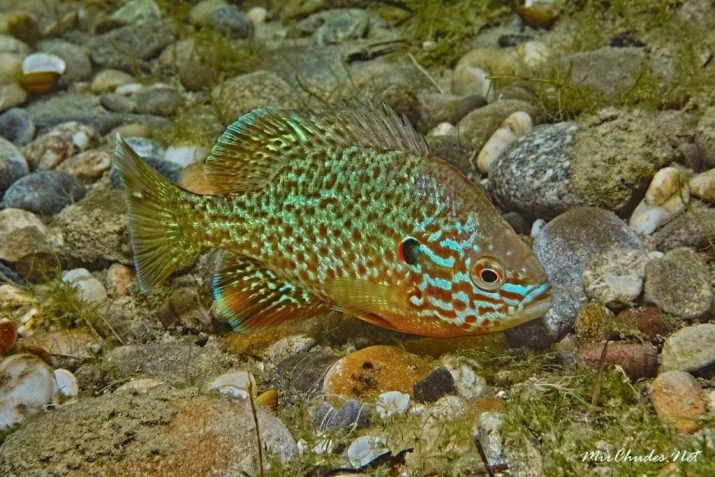
Catnip catfish
It grows in length to 28-30 centimeters. For maintenance, a closed container with a capacity of 150-200 liters is required. Catfish is fed a small fish.
If you want to get such a pet, remember - it is poisonous, its bite can cause anaphylaxis in a person, therefore it is necessary to observe precautions when cleaning the aquarium and feeding.
An amazing ability of a catfish is the possibility of it being on land for some time, this is due to the presence of special bags inside its body where the fish draws water "in reserve".
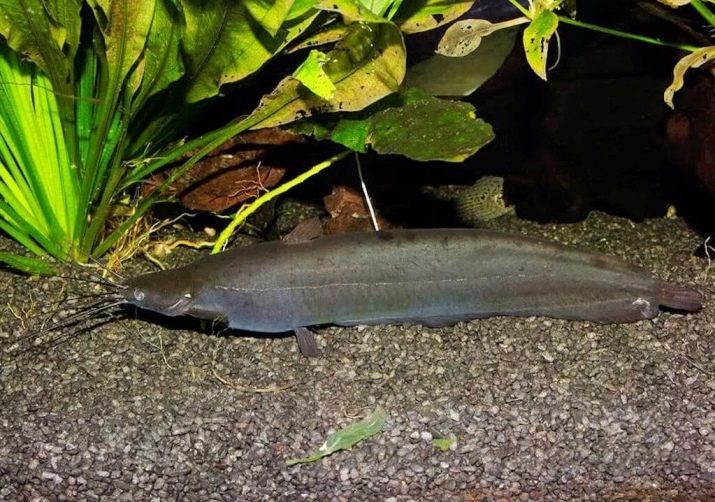
Tetradon dwarfish, pygmy fish
Its name speaks for itself - the size of this predator is very small, only 2-3 cm! The main food for tetradon is snails. The back of the fish is mottled, the abdomen is white. In general, tetradon looks pretty harmless. It has a peculiar defense mechanism: when danger is approaching, it can swell up, doubling at the same time.
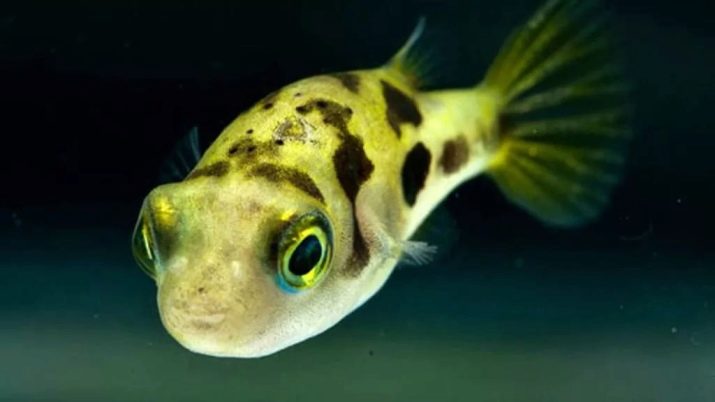
The eight-lane cichlazoma, the "bee"
Predator from the cichl family. Its size is rather large - 20–25 cm. Unlike ladies, gentlemen flaunt a more eye-catching color; on their body there are very beautiful iridescent spots. Both representatives also have vertical stripes on the sides. He prefers to eat cichlazoma with small fish, earthworms, bloodworms.
Its content requires a large capacity, since the predator protects its territory and is very aggressive towards strangers.

Long-haped haplochromis (cichlid knife)
A small fish is about 13-15 cm long, while it loves space. It attacks the curious "neighbors", therefore, a rather big aquarium is needed - 100-150 liters per representative. The main food is small freshwater fish, if you wish, you can treat haplochromis with beef, chicken. It is not a 100% predator, as it eats plants.

Shilb striped
Large fish (27-30 cm), hunted by a pack. The number of individuals should not be less than 6 pieces. The capacity for their accommodation is necessary large - from 60 liters per fish. This predator is an excellent hunter, loves to catch small fish, tadpoles, and also does not disdain fresh-frozen meat.
The aquarium with shields must be equipped with a powerful filter and aerator of water. Use sand as soil, put a large snag in the middle.
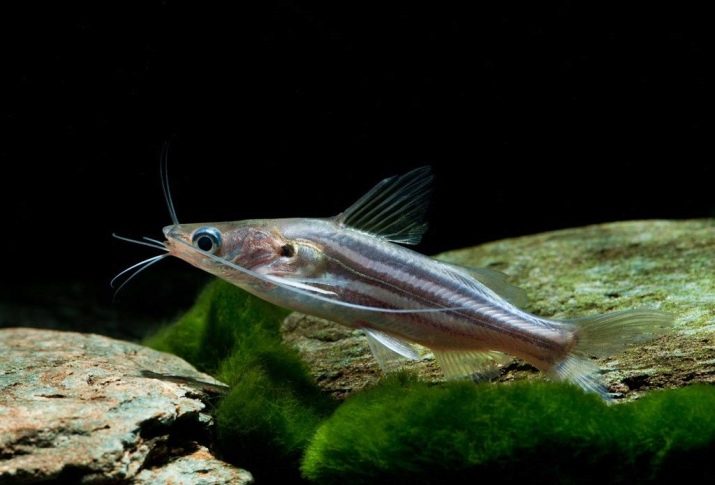
Compatibility
Along with predators in the aquarium, you can also contain either "meat-eaters" or "vegetarians", but of a larger size so that they do not become the prey of the aggressors. However, the best solution would be to keep the fish of one predatory species in a separate tank.
You should not settle together carnivorous fish and small representatives of the underwater fauna, unless, of course, you want to witness their murder. And this is bound to happen, because the predatory fish have a hunting instinct at the genetic level.
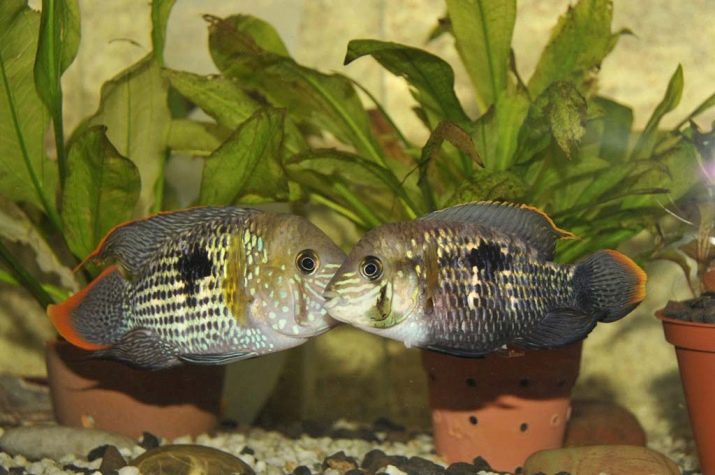
When populating your aquarium, it is worth remembering that the best neighbors are individuals of the same species. However, there is a catch here - some predators are aggressive towards their relatives, and it is better to settle them with non-aggressive large “vegetarians”. Therefore, when choosing fish of a certain variety, familiarize yourself with their features and take them into account when selecting “neighbors”.
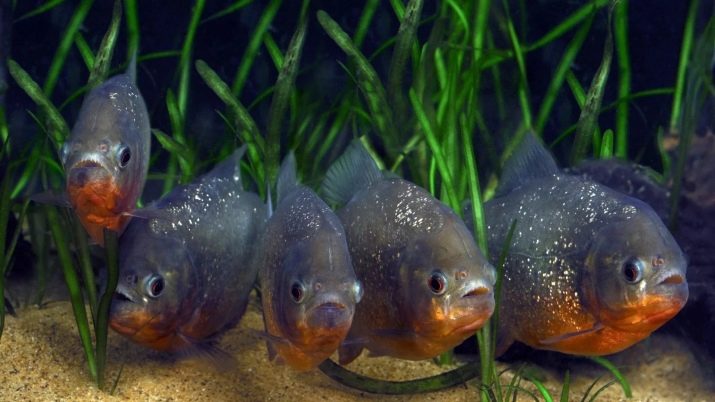
Growing conditions
Raising a predator fish is not an easy task. They are very whimsical to the quality and temperature of the water, they need enough territory for active pastime and hunting, as well as for spawning. The aquarium must be equipped with water filtration and aeration systems. The bottom landscape is also of great importance. Many predators like to hide, dig minks, so for them it is worth laying stones, driftwood, clay shards to the bottom.
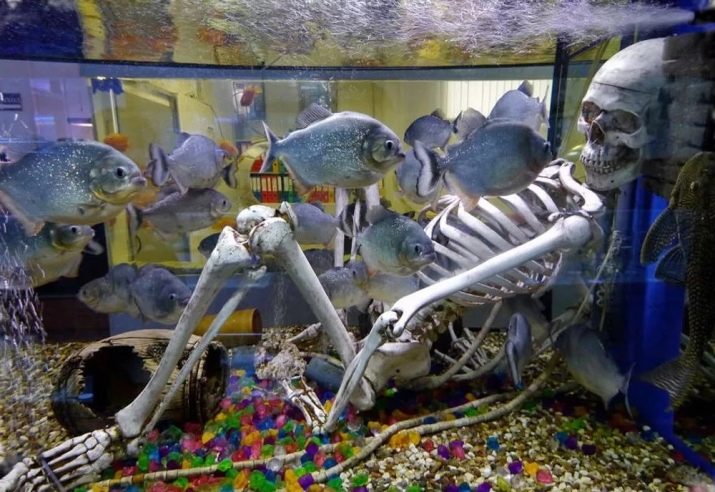
The location of the aquarium is also very important. Of course, it is worth exploring the species features of the selected fish species before deciding where to place the tank, but the general recommendations are as follows: install it away from sources of heat and noise in a well-lit place.
We talked a lot about the size of the aquarium. And agreed that almost all types of predator fish require large sizes. Because of their lifestyle, they need movement and begin to ache from its absence. Maintaining a constant water temperature is also important. Predators cannot tolerate its differences, they can die.
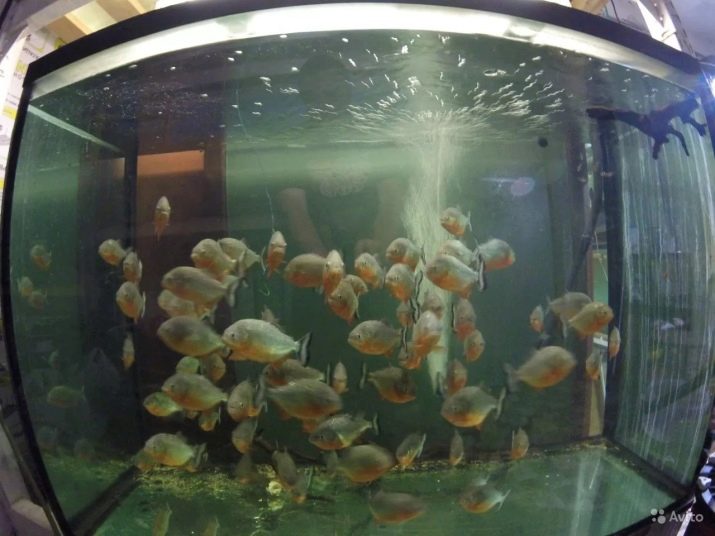
Feeding rules
As we already understood, the main food of predatory fish is meat, small fish, worms, bloodworms, mollusks. Naturally, they prefer the living to the dead. In the absence of proper nutrition, predator fish begin to “fight” with each other: eat fins, do not disdain cannibalism. Therefore, you need to develop an optimal schedule for feeding pets and adhere to it.
Buying "victims", both living and dead, is necessary at specialized points of sale. Do not trust unfamiliar sellers or try to get food “on the street” (for example, dig up earthworms). This is fraught with infection of the inhabitants of the aquarium pathogens (up to death).
Separately, it should be said about how, in fact, the need to feed predators. Most of them have their own hunting tactics: some “sit” in ambush, others freeze like a statue in the middle of an aquarium in anticipation of prey, and others chase and catch “victims”. Observing the behavior of your pets during the hunt can be quite informative.
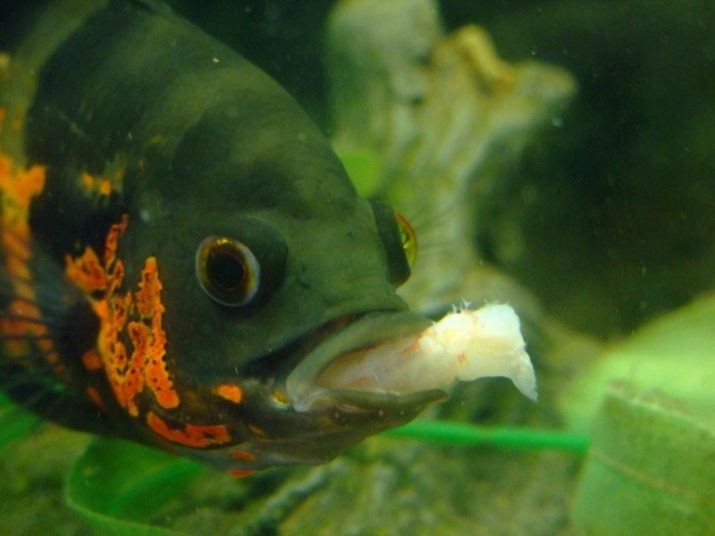
Do not forget to clean the aquarium in a timely manner. Pieces of eaten food - meat, fish, worms, etc. - begin to decompose, forming ammonia, which is harmful to fish. Therefore, installation of a cleaning system and manual processing of the tank are very important.

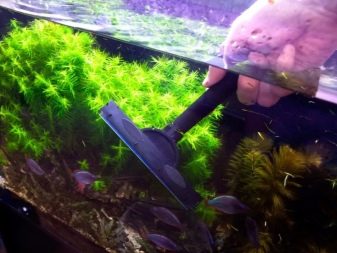
In the end, we briefly mention the frequency of feeding predatory fish. In the wild, most of them hunt almost without interruption. At home, there is no need to overfeed them. Set a schedule - 3 to 5 times a day, in small portions. Fish will gradually get used to it. However, there are species that swallow large-scale prey almost completely. They can eat only 3-5 times a week, refusing to feed.
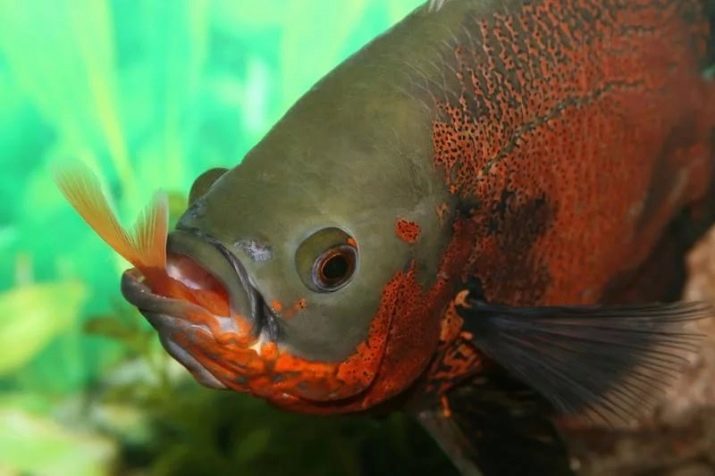
In the next video, you can observe the behavior of aggressive predatory aquarium fish.
